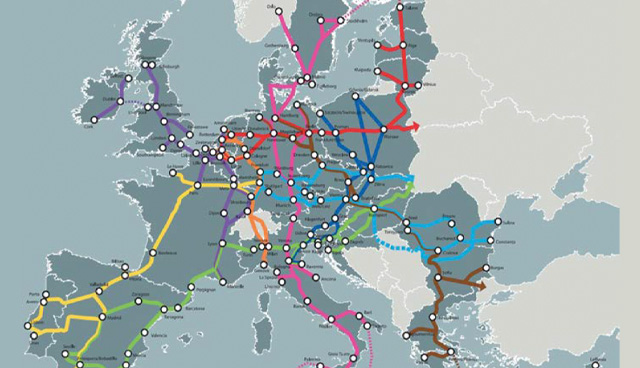Deepening cooperation on the Dublin-Belfast Economic Corridor

Ulster University economist Eoin Magennis overviews the findings of a joint report from Dublin City University and Ulster University on the challenges facing and potential opportunities of the Dublin-Belfast Economic Corridor.
Since 2018, a new local government and higher education network has been emerging in the region between the two cities of Dublin and Belfast. In March 2021, eight local authorities from either side of the border came together to launch the Dublin Belfast Economic Corridor.
The network came together with a shared recognition of the potential benefits that could arise from such an initiative and the challenges that might face it in the coming years, not least the outcome of a UK exit from the EU. Since then, the Covid-19 pandemic has struck and the economic trajectory has shifted significantly.
The region has historically been a centre for economic and population concentration on the island. Our research has shown how the strengths, in particular the road and rail infrastructure, and levels of entrepreneurship and innovation, have emerged over a long time. Since the 1990s and the calls by George Quigley, there has been great interest in the idea of an economic corridor.
Dublin-Belfast Economic Corridor fact file
- Two million people living in the eight local government areas
- 12 per cent population increase since 2006
- 1.4 million of population aged 16–64 (working age), younger that elsewhere on the island
- 34 per cent educated to university level
- 15 per cent not born in Ireland
- 38 per cent of island’s businesses located in the corridor
- 35 per cent of the island’s jobs could be located on the corridor by 2040
A key strength of the corridor region is its two million population and the spatial concentration, educational attainment and diversity of this. The population is younger than elsewhere on the island, a third are educated to university level and more than 15 per cent were not born in Ireland. By 2040, a third of the island’s population could live on the corridor. This presents its own challenges, not least sustainable housing and transport solutions.
Inward investment
The other key strength is the recurrent inward investment in the corridor. Businesses, particularly multinationals, have found the region to be an attractive proposition and returned for repeat business. Dublin and Belfast are key to this success, but the other council areas have seen spillovers from this too.
Employment growth to more than a million jobs has created a demand for high levels of skills. The report notes how there are promotional opportunities for the network to build further on this three decades of success. Tourism, agrifood and emerging industries such as FinTech, cybersecurity and high-tech creative could all feature.
However, we believe that the region has not reached its full potential. Knowledge flows between multinational and domestic firms, between both and universities and between different skills levels have been limited.
The creation of new ‘soft’ infrastructure, such as shared research centres, ‘smart city’ initiatives and investment in environmental management can create new and inclusive development paths.
“…The island’s potential will not be realised until there develops between Belfast and Dublin the normal economic and business interaction which one would expect to see between cities only 100 miles apart… and it needs to be genuinely an economic corridor and not simply a tunnel, with nothing happening in the space between the two cities.”
George Quigley, ‘Developing the North/South Economic Corridor’ (1995)
The corridor initiative was launched online in March 2021 by ministers from the Irish and UK Governments and the Northern Ireland Executive. Several hundred attended to hear about the opportunities within the corridor and there has been strong demand since for definite next steps by the network. The first steps will be political and public engagement by the network this year to refine priorities for a plan of work to grasp the opportunities identified in the report.
Part of our research looks at other places and their cross-border economic corridors. The øresund region has become best known for the bridge opened 20 years ago to link Denmark and southern Sweden. But growth there is about much more than a transport link. Networks of researchers, cultural links and education exchanges have all developed. øresund shows how the key to success is effective partnership with all partners getting to know each other and building trust. This is once more developing in the Dublin-Belfast Economic Corridor.
The Dublin-Belfast Economic Corridor: Current Profile, Potential in Recovery and Opportunities for Cooperation report was compiled by Neale Blair (UU), Jordana Corrigan (TU Dublin), Eoin Magennis (UU) and Deiric Ó Broin (DCU).
The local authority members are currently Armagh City, Banbridge and Craigavon Borough Council, Belfast City Council, Dublin City Council, Fingal County Council, Lisburn & Castlereagh City Council, Louth County Council, Meath County Council and Newry, Mourne & Down District Council.





